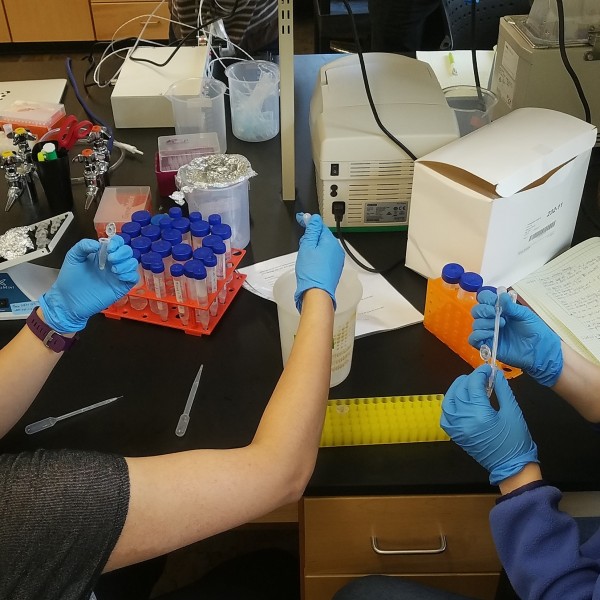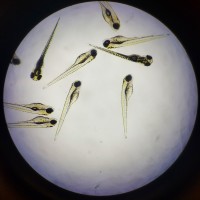Diving Into Neuroscience Research at Kenyon

Last summer, in the basement of Higley Hall, I created life. I was working in Professor Petersen’s developmental neuroscience lab, and in order to study development, my lab mates and I needed to facilitate the birth of some zebrafish. Under the microscope, I watched as their embryos inflated and first cells developed. Forty-eight hours later, I treated these fish with drugs and observed the resulting effect on their nervous systems. Our goal with this project is to uncover drugs that can be used to treat myelination disorders such as Multiple Sclerosis or Charcot-Marie-Tooth disease. After a lot of trial and error, we have positive data about the drugs we’re testing, which is really exciting.

When I was going through the college search process in high school, I was very focused on finding a college where I would be able to do cool scientific research. I had some experience in high school as an intern in a genomics laboratory, and I wanted to delve deeper into that. I remember asking the tour guides at the colleges I visited about research opportunities for undergraduates, which is a huge focus of Kenyon’s science departments. I ended up choosing Kenyon over a well-known research institution back home in St. Louis because the opportunities seemed to be more accessible early on in my academic career. This was immediately true of Kenyon; the school funded my research project last summer, which I will be working on for the remainder of my four years here.
Both in and out of the lab, I had a lot of fun last summer. I have some pretty great lab mates who love to dance around to the “High School Musical” soundtrack while we’re waiting on an experiment, so they kept my days entertaining. Outside of the lab, eight of my friends on the track team were doing research elsewhere on campus, and six of us lived together in an apartment. We took turns making family-style dinner each evening, and we often ended up around the table until late at night telling stories and laughing. We took day trips to go running at some of the state parks in the area and even ventured up to Cleveland for a Dead and Company concert. I would stay over the summer to do research again in a heartbeat; it was a blast to spend the summer “Neurding Out.”
But neuroscience research also presents plenty of challenges. When working with live animals, your research schedule and their relative cooperation are often at odds with each other. In order for us to run the experiments we want to, we need the fish to lay eggs. This adds to the stakes of our experiments because if we botch a procedure, it may be another week before we can get more eggs from a strain of fish. Professor Petersen is always around if we have questions, but she wants us to be autonomous in her lab. She’s a big believer that messing up is the most important part of learning, which is great because I mess up a lot.
At the end of the summer, we uncovered a data point that seems to be a big part of the puzzle we are piecing together with our drug screen project. By finding the therapeutic dose for one of the drugs we are testing, we now know the proper amount needed to rescue the fish. This was especially exciting because of all the trial and error that my lab mates and I went through to optimize the experiment. Our next goal is to uncover what that drug is targeting, from a molecular standpoint, and I am hopeful that we will understand that soon. I’ll be working in the lab for credit next semester, and I cannot wait to see what we can discover.
